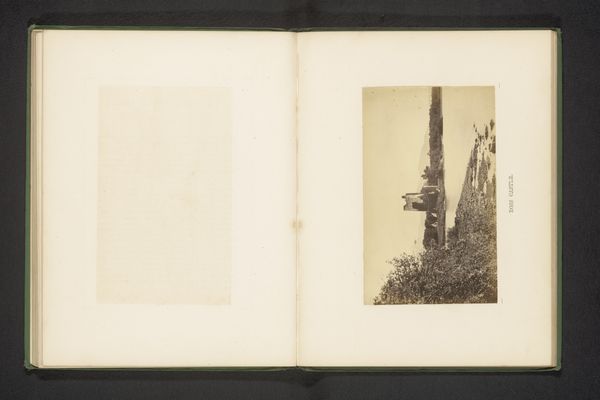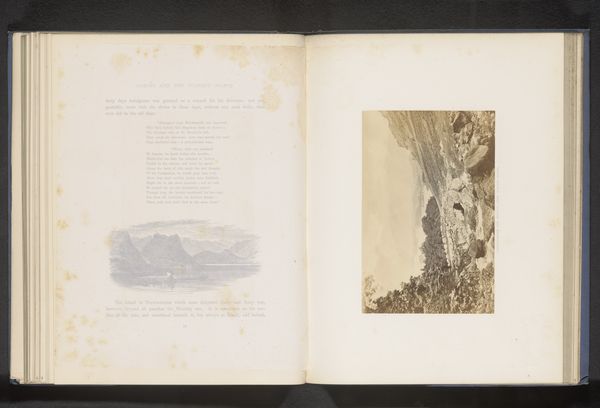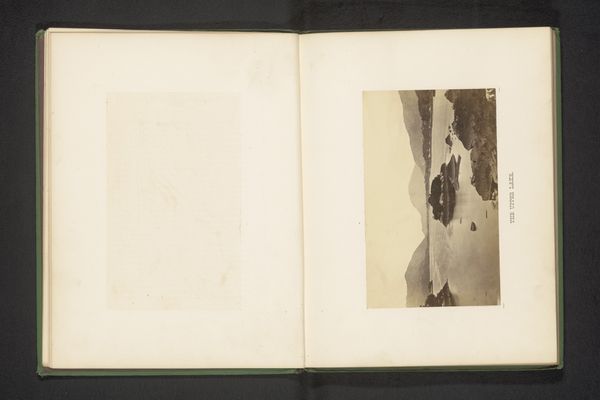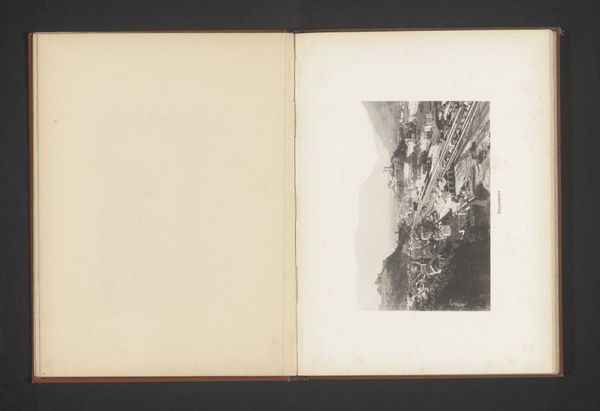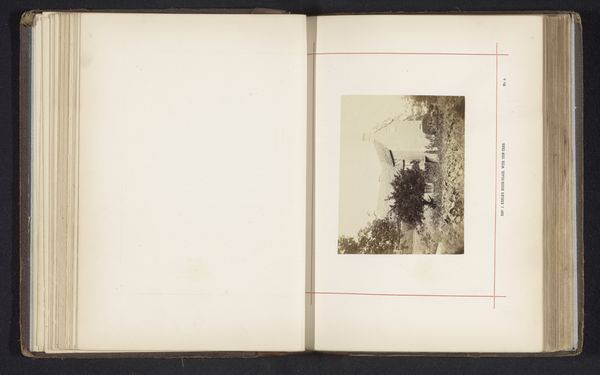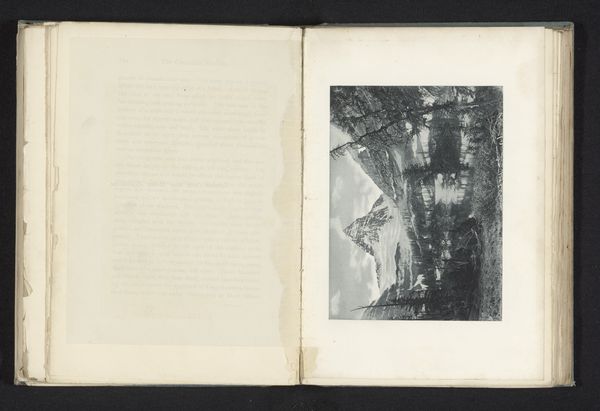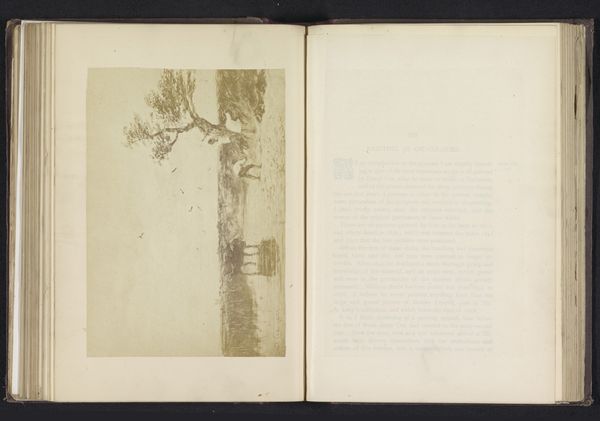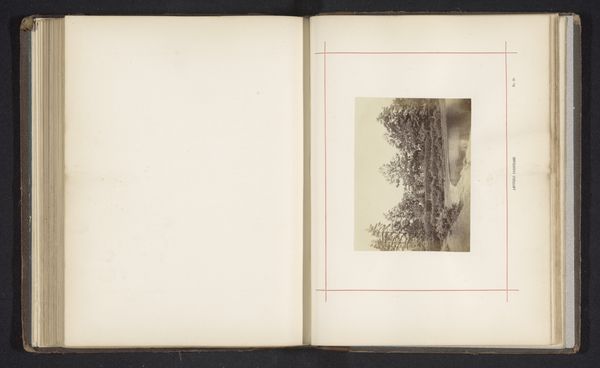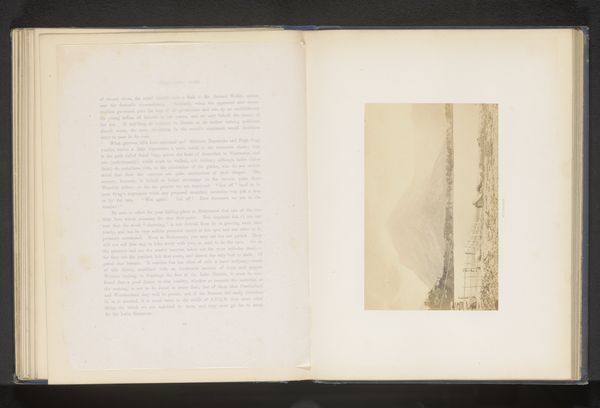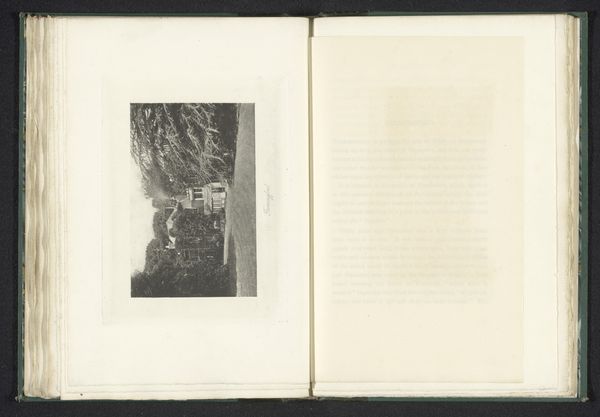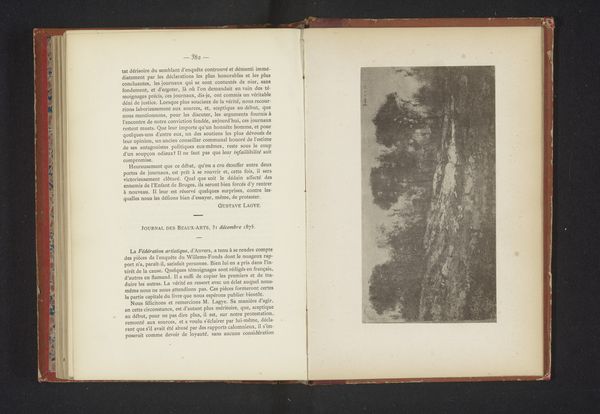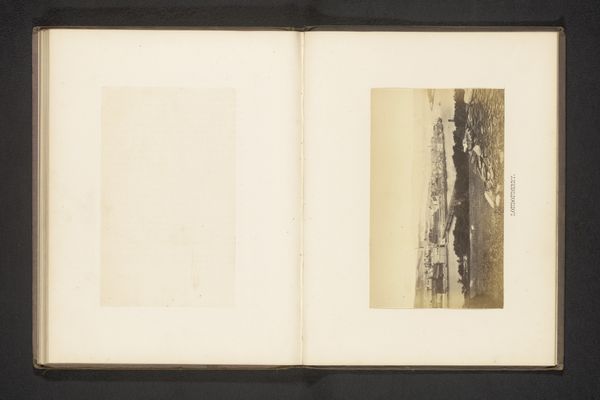
Dimensions: height 111 mm, width 160 mm
Copyright: Rijks Museum: Open Domain
Editor: Here we have Walter Dwight Wilcox's "Gezicht op Bow Lake," likely an albumen or gelatin silver print, dating to before 1897. There's something almost dreamlike in the mirrored reflection of the mountains in the water, but the photograph itself is presented in an album page, seemingly facing text on the opposite page. How should we interpret that presentation? Curator: Presenting photographs in albums gained prominence in the latter half of the 19th century. These albums weren't just for display; they actively shaped how people perceived photography. Putting images in albums signaled respectability and documentation rather than something artistic. Consider the cultural context: widespread access to landscape photography like this increased during a period of immense westward expansion and romantic notions about the untouched wilderness. Editor: So it’s more than just looking at pretty pictures; it’s about shaping how we *see* them. I’d always assumed it was just a personal thing. Curator: Not entirely. Photography like this became deeply entangled with concepts of national identity. What aspects of the American or Canadian landscape did society then choose to highlight, and, perhaps more critically, which were omitted? This Bow Lake view probably served both personal memory and reinforced the visual vocabulary of wilderness appreciation of the period. But even back then, there would have been Indigenous guides and outfitters integral to the experience, invisible behind the final picture. Editor: That's fascinating. I had only thought about the aesthetic choices within the image itself. But this is making me think about what is outside the frame. Curator: Precisely! By considering the institutional setting of an album and the social context of westward expansion, what seemed to be just another landscape takes on richer meaning, doesn't it? It becomes less about Wilcox as the individual artist, and more about understanding how cultural ideas took material form. Editor: Definitely. I never considered that photographs in albums, as records of personal journeys, could simultaneously perform a vital socio-political role.
Comments
No comments
Be the first to comment and join the conversation on the ultimate creative platform.
